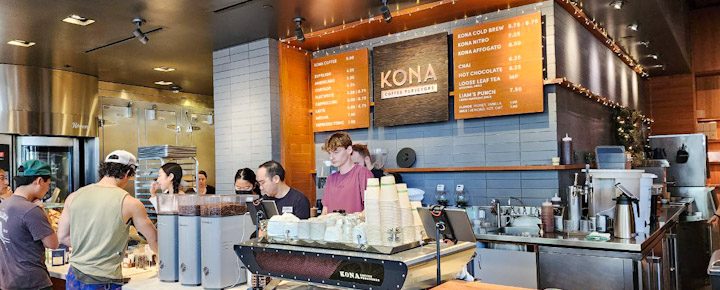One person said if you can’t tip generously, don’t come. Another said, for goodness sake don’t tell customers that. Five huge issues with tipping in Hawaii.




One person said if you can’t tip generously, don’t come. Another said, for goodness sake don’t tell customers that. Five huge issues with tipping in Hawaii.
Pay in cash. Leave the change if you like, That will eliminate the screen for the 20 to 30% tip
I pay cash just so I can avoid that dreaded tip screen.
The “dreaded tip screen”? Are you that intimidated / bullied / afraid of some flashy hardware. Just say no! Stand up for yourself!
I traveled to Seattle several years ago and a majority of the restaurants added the tip in when presenting you with the bill, 20%. In some cases, you had no choice but to pay it because it was the standard “service charge” for that establishment. I’ve done a bit of traveling and this was the only place I’ve seen this.
Not sure where you got your data from. But Cambodia does not pay livable wage. Culture just didn’t involve a tip. But with westernization. Tip is now added to many bills.
If, and When, there’s a party of 4 or more the Restaurants will add the 18 to 20 percent tip automatically to the Bill to guarantee that the server is properly tipped. If there’s a Legitimate Reason for the Server not to receive that amount it should be taken up with Management. If the Server does an over the top job nothing says that a larger gratuity can’t be left.
I went to the UK last November. I was surprised how people used their touch cards for everything, even at coffee outlets. At no time did I ever see a tip request. It was touch, and go! In France, a service charge is automatically assessed, and the percentage is not divulged, though it’s 10 to 15%. People often leave small change as well.
Service charges are added in the US at high-end restaurants, and room service (in addition to a flat delivery fee). I think the reason why the US doesn’t go the European route is because removing the “freedom” to decide reeks of socialism.
BTW there is no tipping in Japan either and you still get good service, though things are a changing…
It is very expensive to live in Hawaii. Why doesn’t the state distribute money directly to residents like they do in Alaska. Are the tourists going to balk at a resident tax to vacation there? You need to have employees be able to work at all the places visitors are staying, eating, and activities they all enjoy while there. It’s pay to play
That is between the residents and the State but a tax for supporting workers goes over the top too far. Generations of Hawaiian Voters have chosen the direction of Hawaii by who they vote for. As such everything that is Wrong can be directly traced back to the Voter. Housing too high? Not enough affordable housing? Prices out of control? Stagnated Wages and lack of Healthcare? Overcrowding? Too many Tourists? The list goes on, all traced back to the Voters. Can’t fix what has been broken for years or more in a few terms,however, keep voting the same types in and it will just get worse. Blame Yourselves.
Fun article but your trivia is false. TIP is not shorthand for “To Insure Promptness. That is a myth. First of all, it would be “ensure”, not “insure.” Second, it makes no sense because you generally give a tip after meal, not before a meal. So it wouldn’t “insure” promptness because the meal is already finished.
Aloha. Here in the Leeward (West) side of Oahu, we don’t get a lot if tourists outside of Ko ‘Olina. While we do get some of the same “tip me for no reason” prompts, it’s customary to ignore them. The employees expect you to and will many times do it for you to avoid the awkward situation they know that puts you in. It is weird but not a big deal.
I have seen it be a huge thing in Waikiki, etc. No one likes it.
Employers….. Pay your people a living wage! This is your fault.
The thing I hate is when the Suggested tip amount is not only calculated on the items you purchased rather the items and the tax. The tax is passed along to the state. Actually in many cases they don’t have to pass along the whole tax only a portion of it.
I just don’t tip at all. I don’t care. I won’t be shamed into paying for something I shouldn’t have to. Business owners need to pay their employees appropriately, that’s not my problem.
convenient cop out … we all have to deal with R E A L I T Y such as it is….. you’d be paying a lot more upfront if other people’s tipping habits weren’t subsidizing your POV.